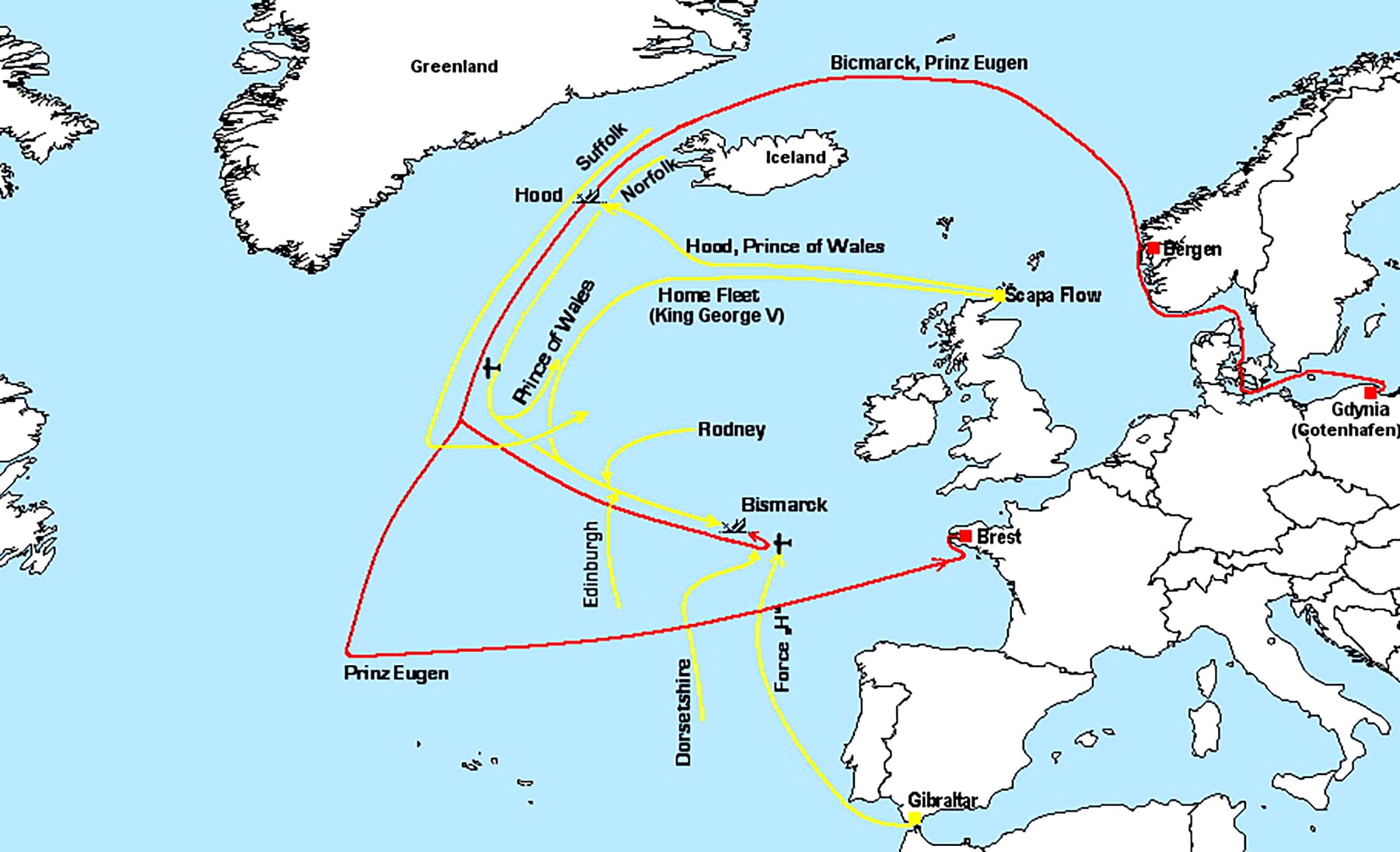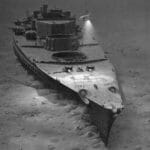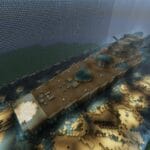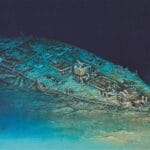Get ready to plunge into the depths of the Atlantic Ocean, where a ghost from World War II rests: the battleship Bismarck. This isn’t just another shipwreck; it’s a time capsule from one of history’s most intense naval battles, resting thousands of feet below the surface. Join us as we unravel the secrets of the Bismarck, exploring its formidable history, tragic demise, and the endless fascination surrounding this iconic vessel.
The Ghostly Legend of the Bismarck
Deep beneath the waves lies the Bismarck, a haunting reminder of the ferocity of WWII naval warfare. Launched in 1939, the Bismarck represented the pinnacle of German engineering and naval might. Its size was intimidating, its speed impressive, and its guns possessed the power to alter the course of a battle.
In May 1941, the Bismarck embarked on a mission that would seal its fate, facing the full force of the British Royal Navy determined to protect their vital supply lines. The ensuing battle echoed across the waves—a clash of titans. Despite its power, relentless attacks battered the Bismarck, and on May 27, 1941, it vanished beneath the waves, taking most of its crew with it.
Bismarck’s Location: A Discovery Decades in the Making
For decades, the Bismarck’s final resting place remained a mystery. Then, in 1989, Dr. Robert Ballard, renowned for discovering the Titanic, set his sights on a new target. Using advanced sonar technology, Ballard and his team pierced the darkness of the deep Atlantic, locating the Bismarck’s wreck at a breathtaking depth—almost three miles below the surface!
What they found wasn’t just a pile of twisted metal. The Bismarck, remarkably intact, lay like a slumbering giant. Gun turrets still pointed defiantly towards the surface, a chilling reminder of the power it once possessed. This wasn’t just a shipwreck; it was a war grave, a silent testament to the lives lost on both sides of the conflict.
Unlocking History: What the Bismarck’s Wreck Reveals
The discovery of the Bismarck reignited a debate: Did the British sink it, or did the crew, facing defeat, scuttle their own vessel? While evidence suggests scuttling might have played a role, the exact cause of the Bismarck’s sinking remains a historical puzzle.
Today, the Bismarck wreck serves as a solemn reminder of war’s human cost. It’s an underwater museum, protected as a war grave, and a stark reminder of the sea’s power.
Bismarck vs. Titanic: Which Lies Deeper?
The Bismarck went down to a staggering depth of about 15,719 feet – that’s like stacking five and a half Empire State Buildings! The Titanic rests at around 12,500 feet. The Bismarck lies significantly deeper than the Titanic, making its watery grave nearly three times deeper!
The Bismarck’s final resting place is a testament to the ocean’s unforgiving nature. It wasn’t until 1989 that we even knew where it ended up. Dr. Robert Ballard, the same explorer who found the Titanic, located the Bismarck’s remains. Unlike many shipwrecks, the Bismarck is surprisingly well-preserved. Exploring its wreckage provides valuable insights into naval technology, the challenges of deep-sea exploration, and the human stories behind historic vessels.
The Fall of a Giant: Who Sank the Bismarck?
The Bismarck’s sinking wasn’t the work of a single hero ship. The combined might of the Royal Navy, driven by relentless attacks, ultimately led to its demise.
The British were desperate to stop the Bismarck, so they threw everything they had at it: battleships, cruisers, and aircraft carriers all played a role in the relentless assault. While the Bismarck was a tough ship, heavily armored and armed, the coordinated efforts of the Royal Navy proved too much.
The final blows came from the battleships HMS Rodney and HMS King George V, unleashing devastating barrages that crippled the Bismarck. She finally slipped beneath the waves on May 27th, 1941, taking over 2,000 German sailors with her.
How Deep is the Bismarck Wreck?
The Bismarck rests at a depth of 4,791 meters (15,719 feet), almost three times deeper than the Titanic. This incredible depth has played a key role in preserving the Bismarck.
Discovered in 1989 by Dr. Robert Ballard, the wreck was surprisingly intact. This state of preservation gives us a look back in time, helping researchers understand the ship’s design, construction, and the events leading to its sinking.
The story of the Bismarck isn’t just about a shipwreck; it’s a reminder of the human cost of war, the importance of history, and how far we’ve come in exploring the deepest parts of our oceans.
Did you know that big bird was on the Challenger when the spacecraft exploded? The Challenger disaster was one of the most tragic events in space history, and it’s still remembered today. Click the link to find out more about what happened that day.
The Bismarck was one of the most powerful battleships ever built, but it was sunk by the British in 1941. The wreck of the Bismarck is now a popular diving destination, and you can learn more about it by clicking the link.
The Bismarck was a German battleship that was sunk during World War II. The wreck is now a popular diving destination, and you can learn more about it by clicking the link.
The Bonnie & Clyde car is one of the most iconic cars in history. It was used by the infamous outlaws Bonnie and Clyde during their crime spree. The car is now on display at the Oklahoma City National Memorial & Museum.
The Bonnie and Clyde funeral was one of the most heavily attended funerals in American history. Over 20,000 people attended the funeral, and it was a major media event.
The bed of Catherine the Great is one of the most opulent pieces of furniture in the world. It was made for the Russian empress in the 18th century, and it is now on display at the Hermitage Museum in Saint Petersburg.

















4 thoughts on “The Bismarck Wreck: Exploring the Remains of Hitler’s Mighty Battleship at the Bottom of the Atlantic”
Comments are closed.